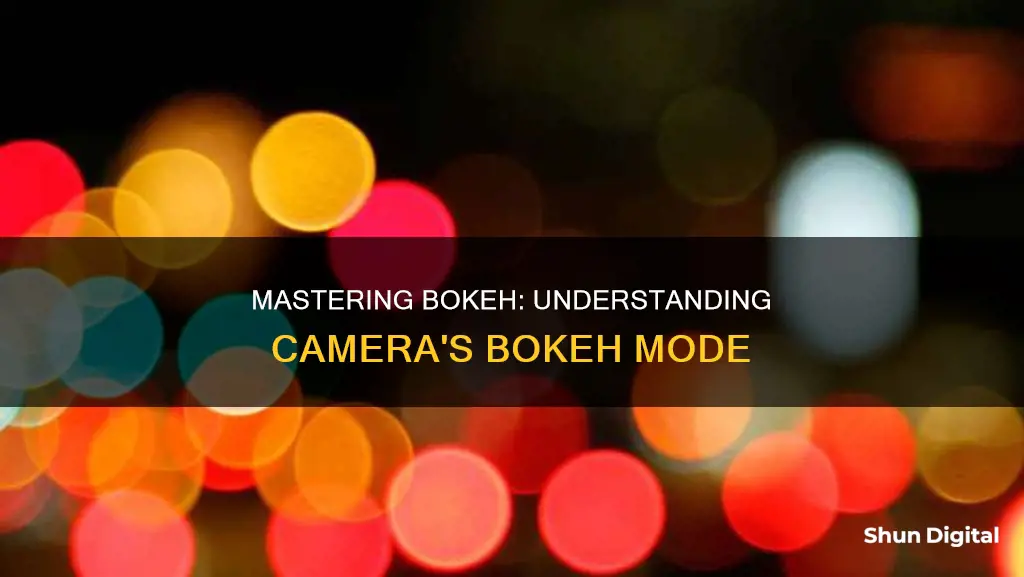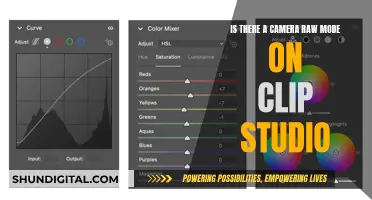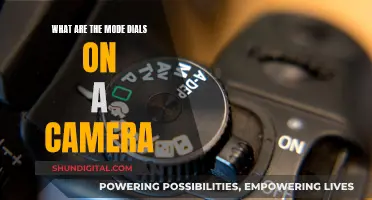
Bokeh is a photography technique that uses a shallow depth of field to create a blurry background, drawing attention to the subject of the image. The word bokeh comes from the Japanese word boke, meaning blur or haze. The effect is created by using a wide aperture lens, which lets in more light and results in an image with soft, out-of-focus areas that include circles of light. Bokeh is often used in portraits to blur out the background and make the subject stand out. It can be achieved with a DSLR or film camera by adjusting the aperture, distance from the subject, and focal length. On a smartphone, a dual-lens camera can be used to achieve the bokeh effect, or a third-party app can be downloaded to create the same result.
| Characteristics | Values |
|---|---|
| Definition | The aesthetic quality of the blur produced in out-of-focus parts of an image |
| Origin | Japanese word "boke" meaning "blur" or haze |
| Pronunciation | Boh-kay |
| Opposite | Deep focus, where multiple distances are visible and in focus |
| Creation | Using a wide aperture lens |
| Effect | Visually appealing, forces attention to a particular area of the image |
| Ideal lens | 50mm lens, cheap, easy to find, aperture opens up to f/1.8 or f/1.4 |
| Aperture blades | 9 blades create a rounder aperture, making light sources appear circular and more natural-looking |
| Camera mode | AV mode or Aperture Priority |
| Background | Choose a good background with appealing lights and patterns |
| Foreground | Reflective surfaces such as windows create good foreground bokeh |
| Distance | The greater the distance between the subject and the background, the better the bokeh |
| Colours | Bokeh provides distinct, colourful backgrounds that look visually appealing |
What You'll Learn

Bokeh is a Japanese term
The term "bokeh" in photography describes how a lens renders an out-of-focus background, creating a soft, creamy effect that is visually pleasing and draws attention to the subject. It is not just any blur but is specifically caused by a narrow depth of field, which is the distance between the nearest and farthest objects in focus. Bokeh is often associated with small background highlights, such as specular reflections and light sources, but it can also occur in all regions of an image outside the depth of field.
The quality of bokeh depends on the lens used. Lenses with more aperture blades tend to produce better bokeh, as they create a rounder aperture, resulting in more natural-looking light sources. Portrait and telephoto lenses with large maximum apertures typically yield more pleasing bokeh than cheaper consumer zoom lenses. Additionally, lenses with low f-stops, such as f/2.8 or lower, are ideal for achieving a prominent bokeh effect.
To create beautiful bokeh, photographers should also consider the background and foreground of their images. Urban locations with lights from buildings and streetlights can provide interesting visual elements. Reflective surfaces, such as windows, can also create good foreground bokeh by filling the negative space in front of the subject. Experimenting with different distances between the subject and the background can also enhance the bokeh effect, as a greater distance between the two will result in a more pronounced blur.
Extending Black Magic Camera Battery Life: Top Tips
You may want to see also

Bokeh is the blur quality
Bokeh is derived from the Japanese word "boke", meaning "blur" or "haze". The term is used in photography to describe the aesthetic quality of the blur produced in out-of-focus parts of an image, whether in the foreground or background. Bokeh is not the blur itself, but rather the quality of the blur, which can be described as "good" or "bad". Good bokeh is visually pleasing and draws attention to the subject, creating images that appear dreamy, eye-catching, and even otherworldly. It is achieved by using a wide aperture lens, which lets in more light, and is often associated with small background highlights such as specular reflections and light sources.
The opposite of bokeh is deep focus, where multiple distances are visible and all are in focus. Bokeh is particularly noticeable around small background highlights, but it is not limited to highlights. It occurs in all regions of an image that are outside the depth of field. The quality of bokeh depends on the lens used, with some lenses blurring the image in a way that is pleasing to the eye, while others produce distracting or unpleasant blurring. Portrait and telephoto lenses with large maximum apertures typically yield more pleasant-looking bokeh than cheaper consumer zoom lenses. Lenses with more aperture blades, such as 9 or more, create rounder apertures, resulting in more natural-looking circular light sources.
To achieve good bokeh, it is important to use the right lens, such as a 50mm lens or telephoto lenses, and to set the camera to AV or Aperture Priority mode to ensure a wide aperture. Choosing a suitable background and foreground is also crucial, as plain backgrounds may not produce desirable bokeh effects. Urban locations with lights from buildings and street lights, or bodies of water that reflect light, can provide interesting visual components for the background. Additionally, creating distance between the subject and the background can enhance the bokeh effect, especially when using a lens with a short focal length.
Bokeh is a popular effect in photography as it adds a stylistic and artistic touch to images, making them more visually appealing and helping to emphasise the subject. It is often used in portraits, where the subject is in focus while the background is beautifully blurred. With practice and experimentation, photographers can master the art of creating stunning bokeh effects that enhance the impact of their images.
Fuji Batteries: Are They Made by Fuji Camera Company?
You may want to see also

Bokeh is about the whole out-of-focus area
Bokeh is derived from the Japanese word "boke", which means "blur" or "haze". It is a popular optical effect in photography that makes images visually appealing by forcing attention to a particular area of the image. Bokeh is the quality of the out-of-focus or "blurry" parts of an image, rendered by a camera lens. It is not the blur itself or the amount of blur in the foreground or background of a subject. The blur that separates a subject from the background is called "background blur" and is caused by a shallow "depth of field".
A good bokeh is visually pleasing and should please the eye. It should appear soft and "creamy", with smooth round circles of light and no hard edges. The Nikon 85mm f/1.4D lens, for example, produces good bokeh, while the Nikon 18-135mm f/3.5-5.6G DX lens produces poor bokeh at the same focal length and aperture.
To achieve good bokeh, it is important to use the right lens. A lens with an aperture of at least f/2.8 is recommended. A 50mm lens is a good choice for beginners as it is cheap, easy to find, and has a wide aperture. Telephoto lenses are also a good option for creating hazy backdrops. Lenses with longer focal lengths increase the depth of field, even when the distance between the camera and the subject doesn't change. Zooming in with a telephoto lens and using a low f-stop (f/2.8 or lower) increases the blur significantly.
In addition to choosing the right lens, other factors that can enhance bokeh include setting the camera to AV or Aperture Priority mode, choosing a good background and foreground, focusing on the subject, creating distance between the subject and the background, and playing around with colours.
The Power of Battery Grips: Enhancing Your Camera's Performance
You may want to see also

Bokeh is rendered by the lens
Bokeh is a term used in photography to describe the aesthetic quality of the blur produced in out-of-focus parts of an image. The word comes from the Japanese word "boke", which means "blur" or "haze". The English spelling, "bokeh", was popularized by Photo Techniques magazine in 1997 to help English speakers pronounce the word correctly.
The quality of the bokeh will also depend on the lens's correction for spherical aberration. Lenses that are poorly corrected for spherical aberration will produce a different kind of blur for points in front of and behind the plane of focus. This can be desirable, as it creates a softer blur that blends smoothly with the surrounding image.
To create good bokeh, it is important to use the right lens. Lenses with a large maximum aperture, such as portrait or telephoto lenses, will generally produce more pleasant-looking bokeh. It is also important to set the camera to Aperture Priority mode and choose a wide aperture to keep the background blurry. Additionally, choosing a good background with interesting visual components, such as lights or reflections, will enhance the bokeh effect.
Outdoor Game Motion Cameras: How Long Do Batteries Really Last?
You may want to see also

Bokeh is about aesthetic appeal
Bokeh is derived from the Japanese word "boke", meaning "blur" or "haze". It is a popular technique in photography that adds aesthetic appeal to images by creating a soft blur in the out-of-focus parts of an image, usually the background. This draws attention to the subject, making it stand out sharply against the blurred backdrop. The blur produced by bokeh is often described as "creamy", and it gives images a dreamy and eye-catching look.
The quality of bokeh depends on the lens used. Lenses with more blades create rounder apertures, resulting in more natural-looking light sources. Lenses with fewer blades produce polygonal shapes that are less visually appealing. Portrait and telephoto lenses with large maximum apertures tend to yield more pleasing bokeh than cheaper consumer zoom lenses. Additionally, lenses with low f-stops, such as f/2.8 or lower, are ideal for achieving the desired background blur associated with bokeh.
To achieve good bokeh, photographers should pay attention to the background and choose one with interesting visual elements like lights or patterns. Urban locations with lights from buildings and streetlights, or bodies of water that reflect light, can create captivating bokeh effects. It is also important to create distance between the subject and the background, as this maximizes the bokeh effect.
Bokeh is not limited to the background; it can also be applied to the foreground of an image. Reflective surfaces, such as windows, can create interesting foreground bokeh by filling the negative space in front of the subject with reflected light.
The bokeh effect is not only achievable with DSLR or film cameras but also with smartphones. Smartphones with dual-lens cameras can capture the bokeh effect by taking two pictures simultaneously and combining them to create a blurred background. Single-lens smartphones can also achieve this effect using third-party apps that simulate the bokeh technique.
The Best Ways to Store Camera Batteries
You may want to see also
Frequently asked questions
Bokeh is a photography term that comes from the Japanese word "boke", meaning "blur" or haze. It refers to the aesthetic quality of the blur produced in out-of-focus parts of an image, usually the background.
To achieve the bokeh effect, you need to use a lens with a wide aperture. The wider the aperture, the more light is let in, and the blurrier the background will become. You can also adjust the shutter speed and positioning of your camera to enhance the bokeh effect.
Here are some tips to create good bokeh:
- Choose the right lens: A lens with an aperture of at least f/2.8 is recommended.
- Set your camera to AV or Aperture Priority mode to control the aperture.
- Choose a good background with interesting visual elements like lights or patterns.
- Create distance between the subject and the background to maximise the bokeh effect.







